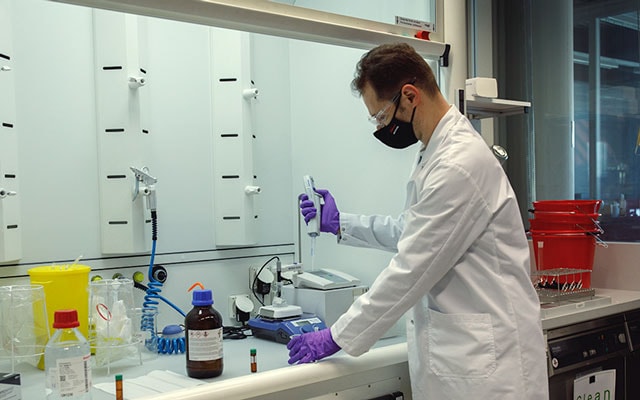Disruption is endemic. Over the past few decades, entire industries have been transformed by innovative start-ups like Meta, Tesla, Uber, and Airbnb.
But established brands have also disrupted themselves, recognizing the need to transform their business and pivot to meet unmet consumer needs.
Netflix famously disrupted itself not once, but twice—switching from a mailing service to an online platform (when technology allowed streaming direct to customers’ own homes), and then again to produce its own content (once it had the resources to fund and the customer preference data to strategize commissions).
However, for every successful transformation, there are many that fail. A study by McKinsey found that less than a third of companies seeking to transform succeed in sustaining improved operational performance. One of the key drivers of success, McKinsey found, was a strong communications plan.
Dr. Moira Gilchrist, Vice President, Strategic and Scientific Communications,
Philip Morris International*
Communicating your transformation
At Philip Morris International (PMI), we quickly learned that communication would be an essential component of our ambition to deliver a smoke-free future.
Firstly, we had to communicate this monumental business transformation internally and ensure everyone was invested in the objective—replacing cigarettes with scientifically substantiated better alternatives for those adults who would otherwise continue to smoke—driving our journey. Only then, in 2016, were we ready to go public with our commitment to deliver a smoke-free future.
Coming from a science background, I thought—perhaps naively at first—that the world would embrace this idea as a powerful tool to help dramatically reduce the number of smokers in the world. But that wasn’t the case. Smoking is an issue packed with emotion and controversy. And we understand that, but for years we hadn’t externally communicated how we were planning to change, so people were left with their own impressions of who we were as a company.
Of course, we couldn’t expect people to just take what we had to say on board immediately. We had to build a new relationship with our audience, earn their trust, and overcome the many misconceptions of who we are to ensure our message could have impact.
That’s when communication became a huge focus for us.
Changing opinions
We followed some key communications principles to ensure we successfully brought our stakeholders, both internal and external, along with us on our transformation.
Communication starts at home: Companies build trust in new ambitions from the inside out, so employees need to be the first people you communicate with about your change. Seven years on from our initial commitment to go smoke-free, our employees have become proud advocates of our vision.
Don’t leave your employees behind: As leaders, it’s imperative we remain several steps ahead of the broader organization. However, if you radically disrupt in a dramatic timeframe but you fail to bring everyone else up to speed, how can you expect your teams to develop an aligned and robust external communications strategy capable of shifting perceptions of the company you’ve become? That’s why it’s critical everyone internally is clear about, and invested in, the disruptive course a company is on at the earliest possible opportunity. Only then will they feel informed and empowered to spread the word beyond the four walls of their organization.
Be clear and concise: To capture the imagination of your audience, your message must be accurate, compelling, and clear. Even with my background, some of the science behind our story is hard to grasp at times, so we had to take care to put it in simple, digestible terms. Otherwise, how would we keep people’s attention and take them with us on our journey?
Focus on the opportunities: We have faced many challenges at PMI, and the public focus has often been on the potential unintended consequences of our smoke-free products. Of course, guarding against these unintended consequences—such as youth uptake of our products—is a top priority, but we mustn’t lose sight of the hundreds of millions of adult smokers. We have a huge opportunity to help them if they do not quit, and we’ve learned along the way that we need to keep the focus on them.
Companies build trust in new ambitions from the inside out, so employees need to be the first people you communicate with about your change.
Be transparent:The McKinsey study found companies where senior leaders communicate openly across the organization are eight times more likely to succeed in their transformation. We’ve applied that inside and outside of PMI. From early on, we have shared our science with anyone who wants to examine and study it—including the raw data. We’ve taken our message to the public and have welcomed scrutiny and conversation.
Since we first put all these ideas into practice, we’ve not stopped talking to anyone and everyone, with honesty and transparency.
We’ve shifted the dial and changed a lot of minds. We’ve kept our doors open, willing to answer any questions that come our way with openness and honesty. Where we think there might be a gap between what we know and what the public understands, we proactively go out there and state our case.
Ultimately, as businesses and communicators, all we can ask is for our audience to be curious. Transparency sits at the core of everything we communicate, and we encourage people to ask us tough questions (which we will always endeavor to answer) and scrutinize our findings. Why? Because we want them to judge our ambitions—and our products—on facts, not misinformation.
We know that the best choice anyone who smokes can make is to quit tobacco and nicotine altogether. We all agree on that. But nine out of 10 don’t and continue to smoke. What about these people?
Our rigorous science shows that our smoke-free products are much less harmful for adults than continuing to smoke. That’s a great starting point for a discussion about how to move toward a world without cigarettes—and how we can achieve this milestone as quickly as possible.
* On January 1, 2024, Moira Gilchrist was appointed Chief Communications Officer.








